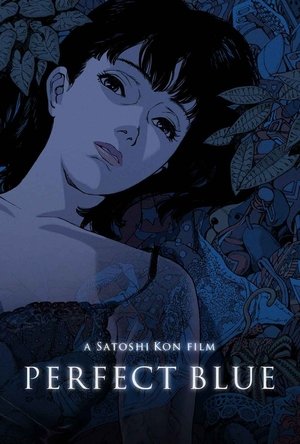
Perfect Blue
Perfect Blue perfectly blends psychologically disturbed fantasy with grounded reality. Mima Kirigoe. A pop-idol. An actress. An X-rated model. Public image and its personifying echoes circulate around the world, adhering to the desires of endearing fans alike. But when their inspirational idol haphazardly shifts career, from pop sensation to dramatic actress, the psychosis of the modern consumer society ultimately changes with her. Saddened, angered and crazed. Mima’s abrupt persona altering career move may have developed maddened stalkers, including her fantastically imagined past self haunting the newly suppressed version. The late Satoshi Kon was known for seamlessly blending fantasy with reality. Depicting an opaque blurred line between delusions and actualities. None more so, than in his exaggerated psychologically disturbed work in Perfect Blue. For many the art form of Japanese animation, commonly titled as “anime”, is cited as “childish”. “Anime is for losers” tweeted kickboxer Andrew Tate. Well, if like Mr. Tate you believe anime to be childish, I implore you to watch Perfect Blue. Without illustrating the voyeuristic nature of Murai’s narrative, it is the most accessibly invigorating piece of psychological stimulation, that is strictly aimed towards adults, to ever be constructed from this art form. The complete metamorphosis of a character that questions her own perceived identity through inquisitional explicit acts of graphic nature. Exploring the psychosis of shared delusional disorder and the acute harassment of an obsessive stalker. Kon establishes a murder mystery whilst inciting the emasculation of a vulnerable female’s world. Male controllers, likened to manipulative deities of authoritative powers, are gradually weakened by a mysterious individual. Culminating into a twistingly fragmented climax that grants Mima the independence that she was repressed from. Kon’s intelligence in foreshadowing, the drama series ‘Double Bind’ essentially replicating Mima’s regressive state of mind, allows the audience to question several aspects. He smartly manages to maintain the central mystery without deterring from Mima’s mental instability. He doesn’t stop there though. Kon refuses to relinquish thematic presence in every frame. Exploring the fragility of a rape victim and the traumatisation of such an explicitly heightened ordeal. The dangers of online anonymity and the tarnishing of existing careers. Challenging the extremities of art in all its mediums. The realism of Perfect Blue is what forces its story to be so utterly terrifying. It’s not just a psychological thriller. It’s horror. Kon’s signature animation style is gloriously vibrant as always, with attentive detail towards realistic environments. The grotesque facial features of “Me-Mania”, only possible in this art form, heighten the natural malformed detest we have for him. Ikumi’s audacious score enables the heart to palpitate more frequently with its sharp tones and ethereal voices. And, as rare as this is, the English dub is surprisingly decent. The reality is that Perfect Blue transcends the medium that it is presented in. It stimulates through Kon’s trademark visceral style, allowing the dangers of early Internet culture to produce a thrilling psychologically adept feature that blurs fantasy with reality. I mean, for a film to make me stand up, clap my hands and utter the words “perfection”, it has to be something special right?. Well, Perfect Blue is special, because it is perfect. And yes, with that said it does indeed garner the perfect rating. Quite possibly the best anime feature to ever be released.
